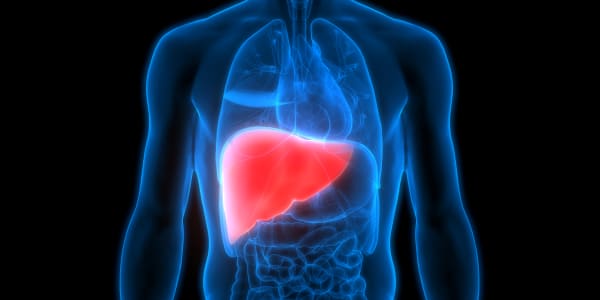Cerebral cavernous malformation isn't the kind of disease the average person is familiar with. But for the 0.5 percent of the population afflicted with the genetic affliction — which causes blood vessels in the brain to grow irregularly — every day can be terrifying.
"There's no treatment," says Dr. Christopher Austin, director of the National Center for Advancing Translational Sciences at the National Institutes of Health. "So you walk around all the time knowing that you have this time bomb in your head, that any moment you have a headache it could be a fatal bleed in your brain."
While seeking a treatment for cerebral cavernous malformation as part of his doctoral dissertation at the University of Utah, Dr. Chris Gibson arrived upon an idea. The lab in which he was working had spent roughly a decade seeking a drug to treat the rare disease, only to find in tests that it didn't work. "In the realm of rare diseases, the biology often isn't well understood," Gibson says. "So is there a better approach, one that is more agnostic to the biology we think we know and that embraces the complexity of the biology we don't understand?"
The idea gave birth to Recursion Pharmaceuticals, a Salt Lake City-based start-up tapping into advances in machine learning, computer vision and robotic automation to allow software to analyze hundreds of thousands of extremely detailed microscopic images of cells every week in search of treatments for hundreds of rare diseases simultaneously.
The notion of augmenting high-throughput drug research with powerful software is by no means entirely novel. But in just two years Recursion has managed to do so at unprecedented resolution, offering hope for millions of people suffering from rare diseases for which no treatment currently exists. The company's 40-person team has already identified more than a dozen promising treatments that are in various phases of testing, with one such treatment for CCM headed for clinical trials sometime later this year.
A medical conundrum
In the United States the term "rare disease" describes a condition that affects less than 200,000 people, though many such diseases affect far fewer than that (cystic fibrosis, a commonly known rare disease, affects just 30,000 people in the United States). Still, there are nearly 7,000 rare diseases that have been identified, many resulting from a single defective gene. Taken in aggregate, rare diseases really aren't so rare, affecting an estimated 30 million in people in the United States alone.
But because each individual rare disease may not affect a wide swath of the population, many do not receive the same degree of investment and research that drug producers dedicate to more widespread diseases (though Congress has in recent years created financial incentives for companies that pursue rare disease treatments).
More from Modern Medicine:
Edited DNA OK for health, but not babies
Scientists uncover an algorithm that predicts autism in high-risk babies
Genetic editing gets OK for health but not designer babies, panel says
Recursion aims to accelerate the search for rare disease treatments by automating the process by which cellular biology experiments are prepared and analyzed. Through advanced robotics, computer vision and machine-learning software, the company can run experiments for and perform analysis on hundreds of diseases simultaneously.
At it's Salt Lake City laboratory, Recursion's team is able to prepare tens of thousands of small experiments per week, creating and then microscopically photographing cells engineered to mimic those affected by various rare genetic diseases. The team then automates the capturing of roughly 200,000 microscopic images weekly, each of which is then fed to Recursion's analysis algorithms, which measure roughly 1,000 aspects of each cellular model. The software then cross-references those cellular models against a database of 2,000 known chemical compounds — many of them existing drugs developed to treat other conditions or compounds that never made it to market — looking for treatments likely to counteract the specific abnormality in each cell.
In other words, Recursion's system creates abnormal cells in the likeness of genetic disease, then uses image-recognition software — not unlike the algorithms deployed by Google and Facebook to recognize faces or match similar images — to automatically find an existing, known compound that will make the cell look healthy again. The fact that Recursion is looking for potential treatments among compounds already familiar to medical researchers and regulatory agencies means they can move promising candidates into testing much more quickly than if they were looking for novel, new treatments.
"If you could just take these drugs that we already know are pretty safe and find new indications for them, that's a huge short-cut," says Austin of the National Center for Advancing Translational Sciences. The center at NIH provided Recursion with a $1 million small-business grant in 2014 to help Gibson and company explore the method and get the idea off the ground.
Recursion has since attracted $19 million in funding from venture capital firms like Lux Capital Obvious Ventures, the VC firm founded in part by Twitter co-founder and former-CEO Evan Williams, as it continues to scale its lab. "We're doing 30,000 small experiments per week now," Gibson says. "I expect hundreds of thousands of experiments per week in the near future."
On the fast track to discovery
That kind of weekly iteration — as well as the ability to rapidly scale its operation — more closely resembles a tech start-up than a biotech firm. "From the end of the day Friday through Monday morning, the robots are taking images of the tens of thousands of experiments we ran during the previous week," Gibson says. "By Monday morning the data science team is already making adjustments to the next week's experiments based on the previous week's findings. That kind of cycle time is not present in the life sciences in general, especially when you're talking about experiments at scale. It's much more of a tech approach that we've applied to the life sciences space."
Though Recursion has yet to deliver its first treatment to market — a critical test of its approach and technology — the company is closing in. Aside from the 15 potential treatments already moving through its pipeline toward clinical trials, Gibson says Recursion's technology regularly hits on a potential treatment for a disease, only to find that a large pharmaceutical company already has a similar drug in clinical trials.
"That's happening often enough that it's frustrating from a business perspective but also reassuring from a scientific perspective," he says. "We're finding things that have taken our peers a very, very long time to identify accurately in a much easier and more rapid way."
Finding new applications for existing drugs is the low-hanging fruit for Recursion, Gibson says. The real value in its technology stems from the fact that the method of experimentation isn't confined solely to rare diseases. Computer vision and machine-learning technology like Recursion's could be tweaked fairly seamlessly to explore for treatments beyond genetic disorders — for inflammation, for instance — by making relatively painless changes to the way the experiments are prepared. But the process for generating and analyzing the images — the key to Recursion's rapid-fire, high-throughput approach to drug research — would remain largely unchanged.
For now, the company remains focused on rare diseases as a means to hone its technology while building the world's largest and richest database of cellular imagery. The image-based process, Gibson says, is inexpensive enough and high-volume enough that Recursion has begun amassing one of the world's most high-resolution, comprehensive biological data sets — what he terms a "map of human cellular biology." Going forward, that will allow researchers to develop treatments for conditions affecting smaller and smaller populations, eventually tailoring treatments to even the rarest diseases.
"If you start to understand the network of cellular biology, I think that positions us to be in a really, really enviable spot in terms of doing precision biology in the future," he says.
— By Clay Dillow, special to CNBC.com




